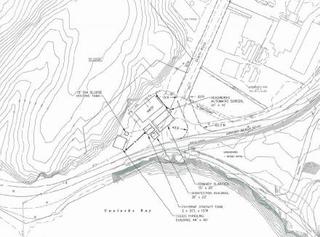City Makes Progress on New Wastewater Treatment Plant

Friday, September 16 2011
For the past few years, the City of Unalaska has been in a struggle with the Environmental Protection Agency over wastewater treatment. In June, the EPA filed a lawsuit for upward of $150 million against the city alleging that Unalaska had exceeded its wastewater discharge limits, with both the city and the State of Alaska pointing out that Unalaska’s Clean Water Act permit contained errors.
Regardless of the outcome of that litigation, the city has decided to build a new wastewater treatment plant in order to comply with the EPA. This Wednesday, City Council made a major step in that process by holding a work session to decide what kind of plant would work best for the community.
Marty Harper of BHC Consultants and Jim Vogel of Bristol Engineering Services Corporation laid out a handful of potential options for a new treatment plant. The biggest thing they all had in common is that their construction would cause utility rates to go up markedly.
At the cheaper end, they brought up a new primary treatment facility, which would run the city about $15 million with an annual operating cost of about $350,000 dollars. That would cause residents’ wastewater bills to go up a minimum of $24 monthly. At the most expensive end, the city could install a plant that uses membrane bioreactors and offers an alternative secondary treatment of wastewater. That plant would take nearly $40 million to build, and it could cost residents up to $165 monthly.
The option that had the greatest appeal to city council was on the less expensive end of the spectrum. Harper and Vogel both recommended chemically enhanced primary treatment as the preferred alternative. That would cost the city just over $15 million to build and over half a million annually to operate. The cost to residents would be between $36 and $55 monthly. Those rate hikes should come into effect after the new plant is built and goes online. Right now, that’s scheduled to happen in 2015.
Through the meeting, the top two concerns voiced by the city council were cost to ratepayers and ensured compliance with the EPA. Council Member Roger Rowland said the chemically enhanced primary treatment plant appealed to him. But he was worried that the EPA could raise their standards and mandate the city to use secondary treatment, which would require the city to embark on another expensive infrastructure project.
Harper responded that the chemical option went beyond the current permit and that it would meet EPA’s standards in the future to the best of his knowledge.
An ordinance related to the construction of the new plant is slated to be introduced at the next council meeting.



